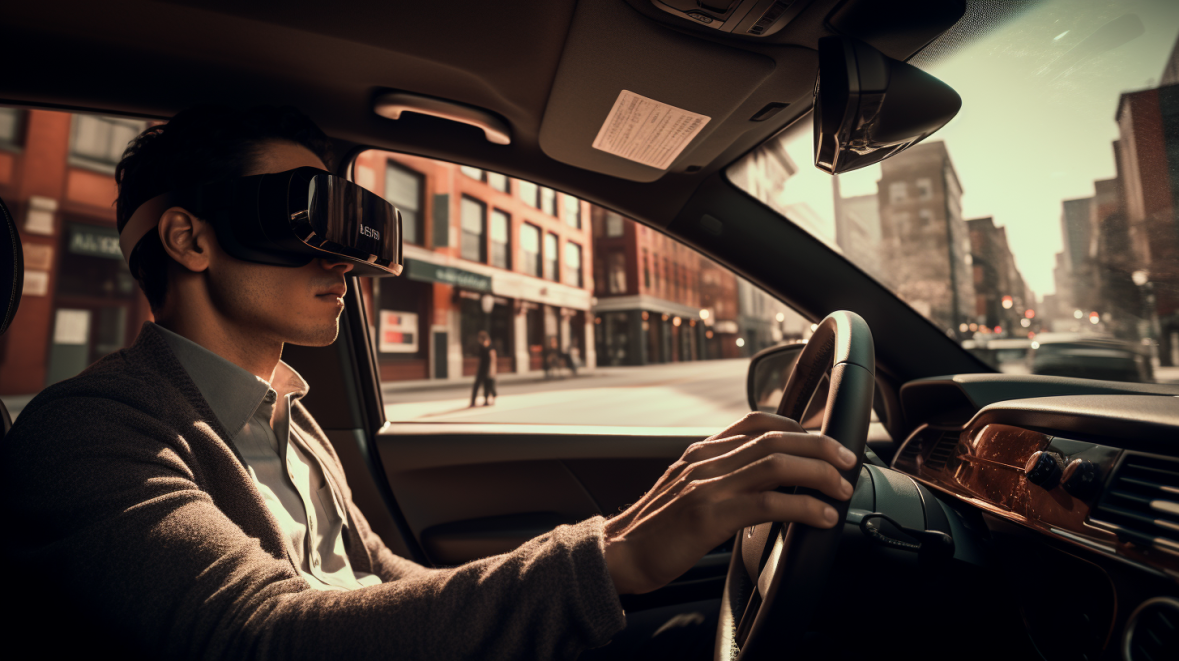Posttraumatic stress disorder (PTSD) following a traumatic event like a car accident can be extremely debilitating.
New research suggests that virtual reality exposure therapy (VRET) may be an effective treatment option.
Key Facts
- VRET is a form of exposure therapy that uses virtual reality to simulate the traumatic experience in a controlled setting.
- Two case studies found that 6 weeks of VRET significantly improved PTSD, anxiety, depression, and insomnia symptoms in car accident survivors.
- VRET allows the traumatic stimulus to be precisely controlled and habituation to be monitored during therapy.
- More research is needed, but VRET shows promise as an innovative PTSD treatment approach.
Overview of Car Accident PTSD
Being involved in a motor vehicle accident can be extremely traumatic, with over 50 million people worldwide developing PTSD from such experiences.
Car accidents are one of the leading causes of PTSD, which involves symptoms like avoidance, hypervigilance, emotional numbness, and re-experiencing the event through flashbacks or nightmares.
PTSD can lead to additional mental health problems like depression, anxiety, anger, guilt, and insomnia.
Effective treatment is critical, but can be challenging since the core trauma cannot be recreated in the therapy room.
Exposure Therapy for PTSD
Exposure-based therapies are first-line treatments for PTSD according to treatment guidelines.
Exposure therapy is based on emotional processing theory and involves gradually exposing the individual to memories of the trauma so they can emotionally process it in a safe space.
This allows fear and avoidance to be reduced through habituation.
Prolonged exposure therapy has patients repeatedly imagine details of the trauma with their therapist.
But many individuals struggle to vividly visualize the event.
Virtual reality can help overcome this barrier.
Introducing Virtual Reality Exposure Therapy

VRET utilizes virtual reality technology to immerse clients in simulations of the traumatic event.
It integrates the principles of prolonged exposure therapy with customized VR scenarios reconstructed from the patient’s trauma memories.
The key advantage of VRET is the traumatic stimuli can be precisely controlled and calibrated to each patient’s needs.
The VR experience evokes sensory and emotional components similar to real-world exposure.
VRET allows fear activation and habituation processes to be closely monitored during sessions.
The VR trauma can be adjusted as needed to optimize difficulty and maximize therapeutic benefits.
VRET Protocol for Car Accident PTSD
Researchers developed a 6-week VRET protocol tailored for car accident PTSD patients.
Each session included VR exposure to a simulated car crash matched to details of the client’s trauma.
The car crash environment was customized based on factors like location, weather, vehicle details, and timing of the real accident.
Patients experienced the VR scene through goggles while hearing related sounds.
VR exposure was kept brief (under 5 minutes total per session) to minimize cybersickness.
Patients then processed the experience and adjusted dysfunctional thoughts with their therapist.
VRET Case Examples for Car Accident PTSD
The researchers tested VRET on two car accident survivors with PTSD.
Patient With No Memory of Accident
One 27-year-old woman developed PTSD symptoms after a serious car crash she couldn’t remember.
She experienced emotional numbness, nightmares, and hypervigilance.
After 6 weeks of VRET, her PTSD, anxiety, depression, and insomnia symptoms were significantly reduced.
The customized VR car crash helped evoke and process trauma emotions even without conscious memory.
Patient With Memory of Accident
A 39-year-old man had debilitating PTSD after a rear-end collision a year prior.
He suffered from insomnia, driving phobias, headaches, and anger about the accident.
His PTSD symptoms likewise improved with 6 weeks of VRET.
The VR exposure helped him habituate to crash memories and reduced driving-related fears.
VRET Shows Promise for Innovative PTSD Treatment
While more controlled research is needed, these case studies suggest VRET can be an effective treatment approach for car accident-related PTSD.
The ability to precisely control exposure to simulated trauma in VR allows fear activation and habituation processes to be optimized.
This leads to measurable reductions in PTSD, anxiety, depression, and insomnia.
VRET provides an ethical alternative to real-world exposure that can overcome barriers in traditional talk therapy techniques.
The future looks promising for VRET and other technology-assisted therapies.
However, challenges remain around standardizing protocols and tailoring VR content to individual trauma histories.
With continued research to address these issues, VRET has immense potential to improve PTSD treatment access and outcomes.
References
- Study: Two cases of PTSD caused by a motor vehicle accident treated with virtual reality exposure therapy
- Authors: Ju-Wan Kim et al. (2023)







